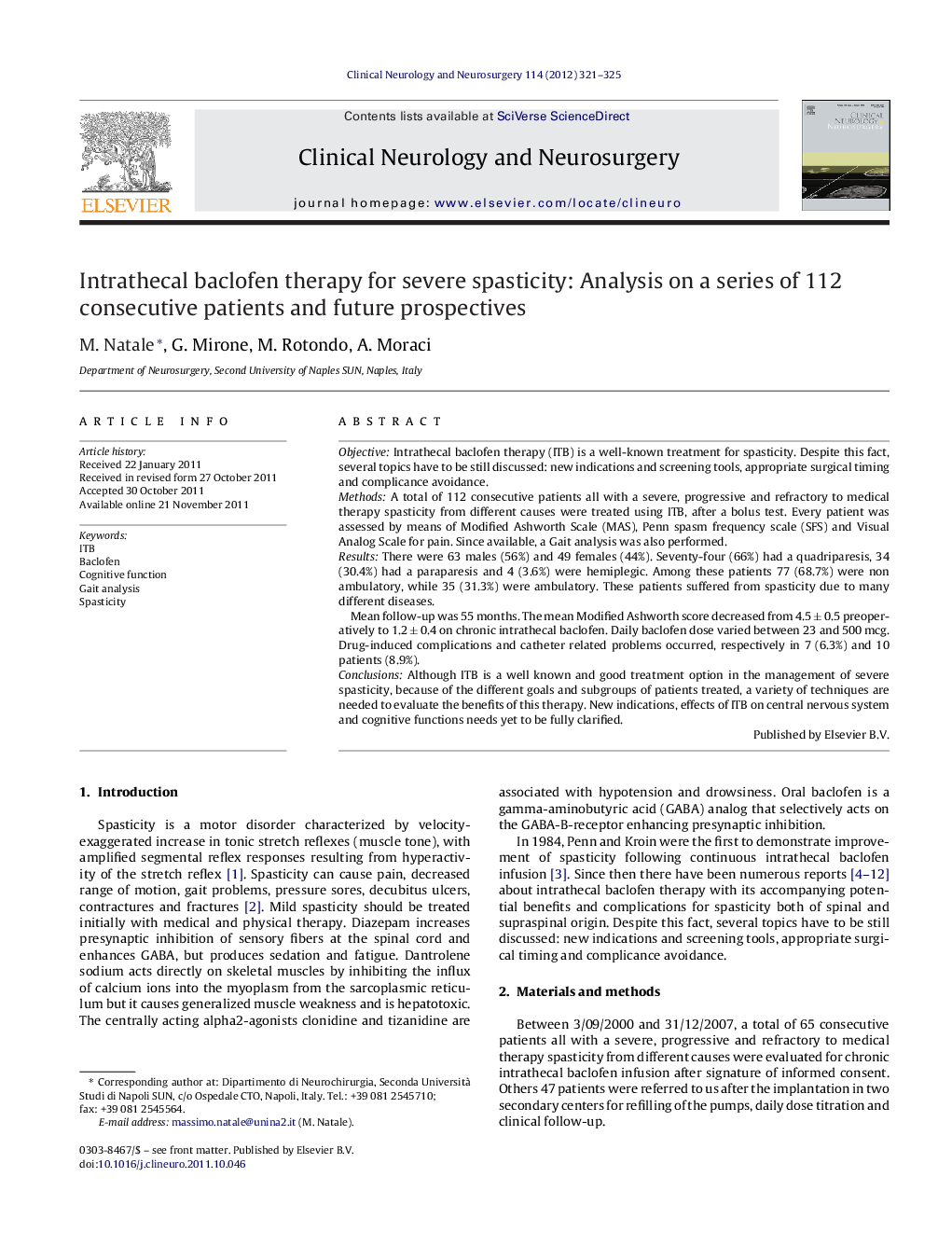| Article ID | Journal | Published Year | Pages | File Type |
|---|---|---|---|---|
| 3041106 | Clinical Neurology and Neurosurgery | 2012 | 5 Pages |
ObjectiveIntrathecal baclofen therapy (ITB) is a well-known treatment for spasticity. Despite this fact, several topics have to be still discussed: new indications and screening tools, appropriate surgical timing and complicance avoidance.MethodsA total of 112 consecutive patients all with a severe, progressive and refractory to medical therapy spasticity from different causes were treated using ITB, after a bolus test. Every patient was assessed by means of Modified Ashworth Scale (MAS), Penn spasm frequency scale (SFS) and Visual Analog Scale for pain. Since available, a Gait analysis was also performed.ResultsThere were 63 males (56%) and 49 females (44%). Seventy-four (66%) had a quadriparesis, 34 (30.4%) had a paraparesis and 4 (3.6%) were hemiplegic. Among these patients 77 (68.7%) were non ambulatory, while 35 (31.3%) were ambulatory. These patients suffered from spasticity due to many different diseases.Mean follow-up was 55 months. The mean Modified Ashworth score decreased from 4.5 ± 0.5 preoperatively to 1.2 ± 0.4 on chronic intrathecal baclofen. Daily baclofen dose varied between 23 and 500 mcg. Drug-induced complications and catheter related problems occurred, respectively in 7 (6.3%) and 10 patients (8.9%).ConclusionsAlthough ITB is a well known and good treatment option in the management of severe spasticity, because of the different goals and subgroups of patients treated, a variety of techniques are needed to evaluate the benefits of this therapy. New indications, effects of ITB on central nervous system and cognitive functions needs yet to be fully clarified.
